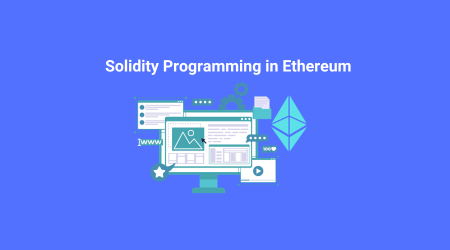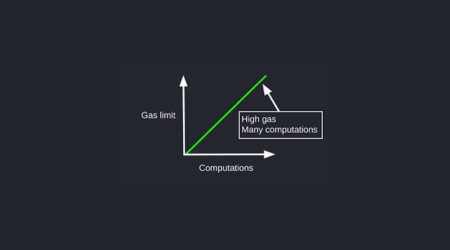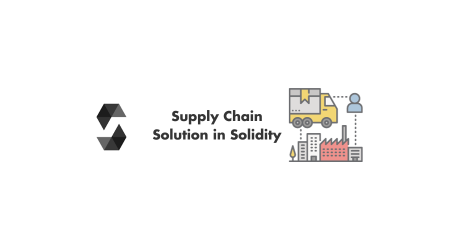Are you ready to dive into the world of Solidity programming for the Ethereum blockchain?
In this article, we will guide you through the basics, help you understand the inner workings of Ethereum and its blockchain, and show you how to set up your Solidity development environment.
You’ll also learn how to write your first Solidity contract and interact with smart contracts on the Ethereum network.
Get ready to explore the best practices for Solidity programming and unlock the potential of this innovative technology.
1. Key Takeaways
- Solidity is a high-level language for writing smart contracts on the Ethereum platform.
- Ethereum’s blockchain offers innovative features such as smart contracts, decentralization, and interoperability.
- Understanding Solidity programming concepts is essential for smart contract development.
- Blockchain technology has the potential to revolutionize various industries by enhancing transparency, security, and efficiency.
2. The Basics of Solidity Programming
Now that you understand the basics of Solidity programming, let’s dive into creating smart contracts on the Ethereum blockchain.
Solidity programming concepts are the building blocks for smart contract development. It is a high-level language specifically designed for writing smart contracts on the Ethereum platform. With Solidity, you can define the rules and logic that govern the behavior of your smart contracts.
Understanding Ethereum and its blockchain will further enhance your understanding of the capabilities of Solidity programming.
3. Understanding Ethereum and Its Blockchain
When it comes to understanding Ethereum and its blockchain, you’ll be amazed by the innovative features it offers.
Ethereum’s blockchain is known for its smart contract functionality, allowing for the creation and execution of decentralized applications.
This feature opens up a world of possibilities, providing benefits such as increased security, transparency, and efficiency in various industries.
I. Ethereum’s Blockchain Features
You can explore Ethereum’s blockchain features to see how they enhance your smart contract development. Ethereum’s scalability challenges have led to the development of various features that address these issues and impact industries across the board. Take a look at the table below to understand the key features and their benefits:
| Feature | Description | Benefits |
|---|---|---|
| Smart Contracts | Self-executing contracts with predefined rules | Automation, transparency |
| Decentralization | No central authority, distributed network | Trust, security |
| Interoperability | Ability to interact with other blockchains | Seamless integration, expanded functionality |
Understanding these features will provide a solid foundation for exploring the benefits of blockchain technology in the next section.
II. Benefits of Blockchain Technology
Take a moment to consider the benefits that blockchain technology offers across various industries.
One of the key applications of blockchain technology is in supply chain management. By utilizing blockchain, companies can track and verify every step of the supply chain, ensuring transparency, authenticity, and efficiency.
Additionally, the financial industry could experience a significant impact from blockchain technology. It has the potential to streamline processes, reduce costs, and enhance security in financial transactions.
Now, let’s explore how to set up the solidity development environment.
4. Setting Up the Solidity Development Environment
To successfully set up your Solidity development environment, you will need to ensure that you have the required software and tools in place.
This includes the Solidity compiler, such as the solc command-line compiler, as well as a text editor or integrated development environment (IDE) for writing your Solidity code.
Once you have the necessary software, you will need to install and configure it properly to ensure smooth and efficient development.
In this discussion, we will also address common issues that may arise during the setup process and provide troubleshooting tips to help you overcome any challenges.
I. Required Software and Tools
To start programming in Solidity, you’ll need a text editor and the Solidity compiler. A text editor allows you to write and edit your code, while the Solidity compiler translates your code into Ethereum Virtual Machine (EVM) bytecode.
Additionally, it’s crucial to set up a virtual environment for a clean and isolated development environment. This ensures smooth debugging and testing of your Solidity programs.
Once you have the required software and tools, you can move on to installation and configuration.
II. Installation and Configuration
Once you’ve gathered all the necessary software and tools, it’s time to install and configure them for your Solidity development environment.
To start, you’ll need to set up Ganache for local development. Ganache is a personal Ethereum blockchain that allows you to simulate the network on your machine.
After installing Ganache, you can deploy your contract on the test network to test its functionality before deploying it on the live Ethereum network.
Now, let’s dive into troubleshooting common issues that may arise during this process.
III. Troubleshooting Common Issues
If you’re experiencing any difficulties during the installation and configuration process, there are a few common issues you may encounter:
- Compilation Errors: Check for syntax errors, incorrect variable types, or missing import statements.
- Runtime Errors: Look out for out-of-bounds array access or division by zero.
- Contract Interactions: Ensure that the contracts are deployed correctly and the correct addresses are being used.
Debugging techniques like using console.log statements or a debugger can help resolve these issues.
Now, let’s move on to writing your first solidity contract.
5. Writing Your First Solidity Contract
When writing your first Solidity contract, remember to use contractions for a more conversational tone.
Writing efficient contracts is crucial for optimizing performance and reducing gas costs.
Make sure to thoroughly debug your Solidity code to minimize errors and ensure smooth execution.
Pay attention to details and think innovatively to create robust and secure contracts.
Once your contract is written, you can move on to the next section, which focuses on interacting with smart contracts on the Ethereum network.
6. Interacting With Smart Contracts on the Ethereum Network
To interact successfully with smart contracts on the Ethereum network, you should familiarize yourself with the process of deploying and calling functions on these contracts.
When deploying and testing smart contracts on the Ethereum network, there are a few key steps to keep in mind:
- Write your smart contract in Solidity programming language.
- Compile the smart contract code using a Solidity compiler.
- Deploy the compiled contract to the Ethereum network.
- Test the deployed contract to ensure its functionality.
Integrating smart contracts with web applications is another crucial aspect. By connecting your web application with a deployed smart contract, you can enable users to interact with the contract directly from the application. This integration allows for seamless execution of contract functions and retrieval of contract data.
Now that you understand the basics of deploying and interacting with smart contracts on the Ethereum network, let’s explore some best practices for Solidity programming.
7. Best Practices for Solidity Programming
Now that you’ve learned how to interact with smart contracts on the Ethereum network, it’s important to understand the best practices for Solidity programming.
These practices ensure the security and reliability of your code. When writing Solidity code, it is crucial to follow secure coding techniques such as input validation, proper handling of exceptions, and avoiding the use of deprecated functions.




